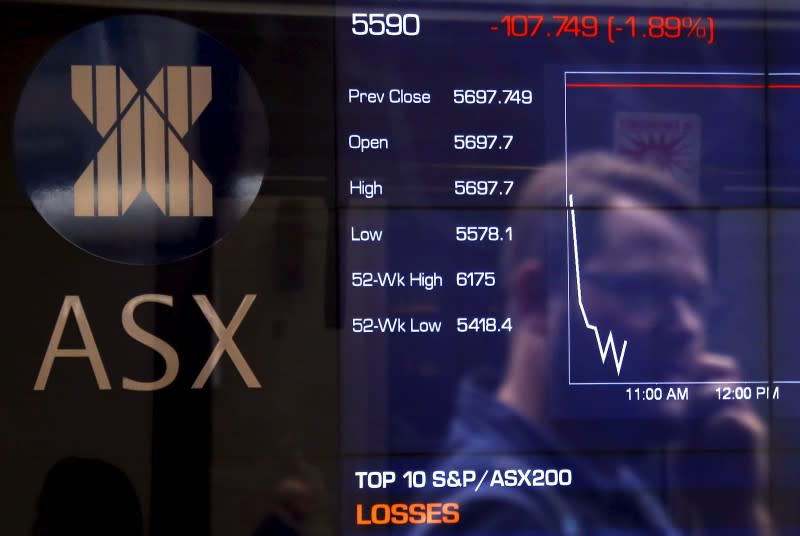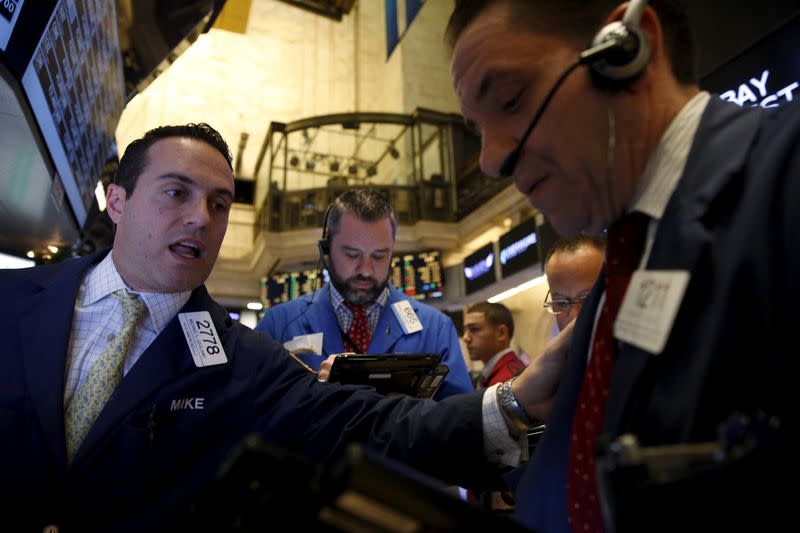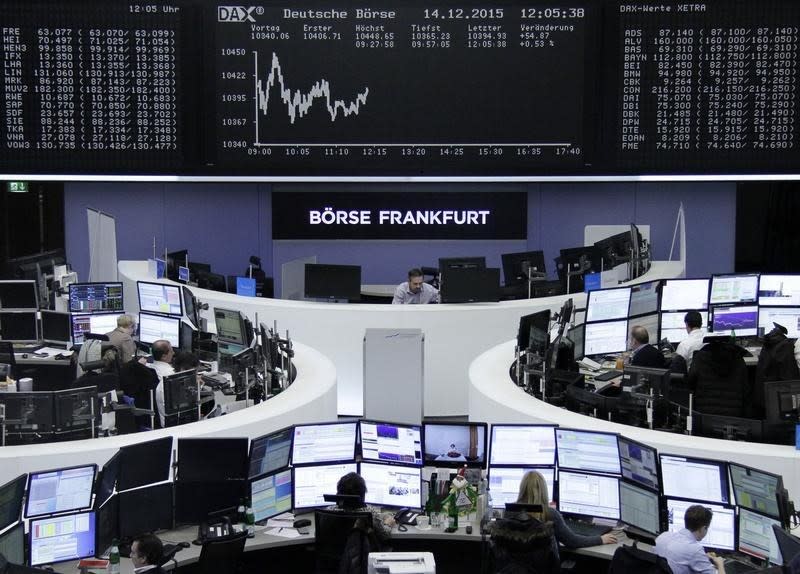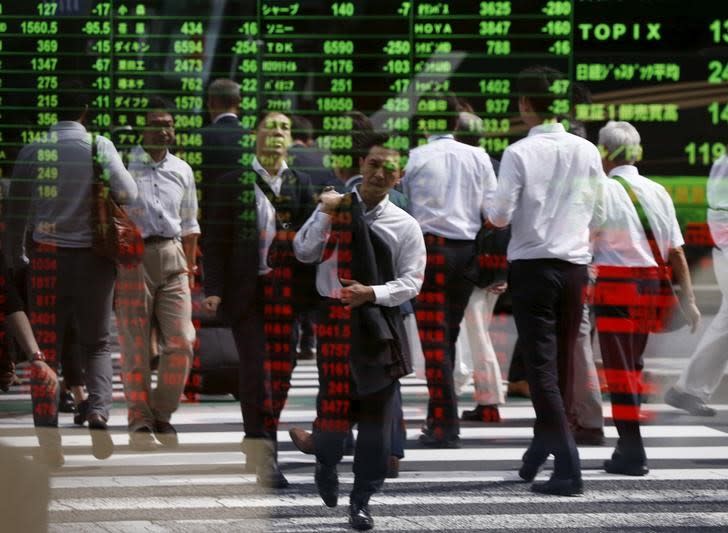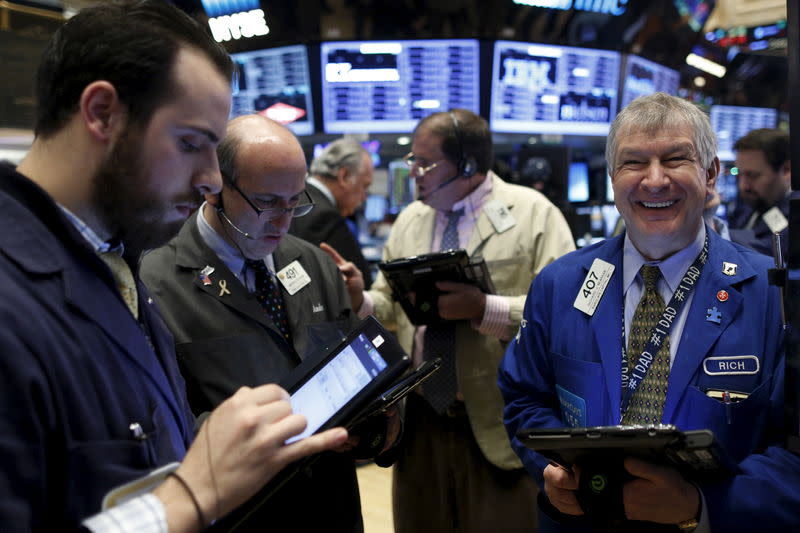Asia stocks up as Fed goes gradual; oil takes a spill
By Wayne Cole
SYDNEY (Reuters) - Asian stock markets rose on Thursday investors chose to take a hike in U.S. interest rates as a mark of confidence in the world's largest economy, though the good cheer did not extend to oil where oversupply again pressured prices.
The Federal Reserve's 25-basis-point increase was almost a decade in the making and easily one of the most telegraphed in history. So there was some relief that, after months of waiting and several false starts, the move was finally done and dusted.
"The Fed will be absolutely delighted with the lack of volatility across all asset classes," said Alan Ruskin, global head of forex at Deutsche.
"Nothing here to change a view that we can have a moderate 'risk-positive rallyette', even if the probability of a March hike is significantly higher than priced."
Nikkei futures (NKc1) pointed to an opening gain of over 2 percent, on top of Tuesday's 2.6 percent advance (.N225).
Australian stocks (.AXJO) rose 0.7 percent, while MSCI's broadest index of Asia-Pacific shares outside Japan firmed 0.3 percent in early action.
On Wall Street, the Dow (.DJI) ended Wednesday with gains of 1.28 percent, while the S&P 500 (.SPX) rose 1.45 percent and the Nasdaq (.IXIC) 1.52 percent.
Markets were soothed by Fed Chair Janet Yellen's assurance that future tightening would be "gradual" and dependent on inflation finally moving higher as long forecasted.
The rate forecasts, or dot points, from Fed members were a little higher than many expected with 100 basis points of hikes pencilled in for next year and a terminal rate of 3.5 percent.
Fed fund futures dipped in response, yet the December 2016 contract implies a rate of only 83 basis points, well below the 1.25 to 1.5 percent favoured by the central bank.
Moves in the Treasury market were also modest. While yields on two-year notes (US2YT=RR) hit their highest since April 2010, they were only up four basis points in all at 1.009 percent.
That did widen the premium over German yields (DE2YT=RR) to 132 basis points, the fattest since late 2006 and a positive draw for the U.S. dollar.
The dollar added 0.35 percent to 99.561 against a basket of major currencies (.DXY), but is having trouble clearing stiff resistance around the 100.00 mark.
The euro was down at $1.0886 (EUR=) having fallen from $1.1000 in the wake of the Fed's statement, while the dollar edged up to 122.38 yen (JPY=).
Richard Franulovich, a currency strategist at Westpac, noted that historically the dollar tended to soften during the start of Fed tightening cycles. Yet he doubted it would last given most other major central banks were very much in easing mode.
"A follow-up Fed hike could come as soon as March, aided and abetted by favourable oil price base-effects that will lift inflation almost a percentage point and a potentially mild winter," said Franulovich.
"We should see a resumption of the dollar's longer term uptrend as 2016 progresses."
Such an outcome would spell further trouble for commodities, making them more expensive when measured in other currencies.
Copper (CMCU3) eked out a tiny bounce but remains 27 percent lower for the year so far.
Oil prices resumed their decline on Wednesday to lose as much as 5 percent after U.S. government data showed a big, surprise build in crude inventories.
Brent (LCOc1) was quoted at $37.57 a barrel after shedding $1.16 on Wednesday, while U.S. crude (CLc1) stood at $35.78 having also lost more than a dollar.
(Reporting by Wayne Cole; Editing by Eric Meijer)

 Yahoo Finance
Yahoo Finance 